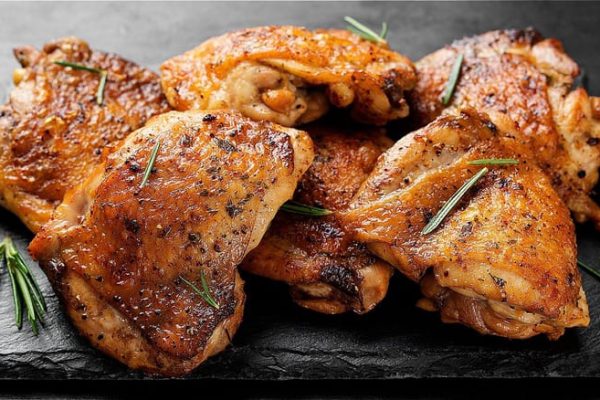
Cooking chicken may seem straightforward, but achieving that perfect balance of flavor, tenderness, and juiciness can be tricky. Many home cooks unknowingly make a few common mistakes that can leave their chicken dry or bland. In this guide, we’ll walk you through some of the most frequent missteps and show you how to avoid them, so you can enjoy deliciously cooked chicken every time.
- Buying Previously Frozen Meat
- Fresh chicken labeled “never frozen” is ideal. It’s juicy and has a better texture than meat that’s been frozen and thawed.
- Not Brining the Chicken
- Brining adds flavor and keeps chicken moist. Try a simple saltwater brine for a couple of hours before cooking for the best results.
- Not Drying the Chicken
- For crisp skin, pat chicken dry with a paper towel, even if you don’t rinse it. Moisture on the surface can prevent it from getting crispy.
- Cooking Straight from the Fridge
- Allow chicken to rest at room temperature for 15 minutes before cooking to ensure it cooks evenly.
- Leaving Chicken on an Open Grill
- Keep the grill lid closed to trap heat and moisture, cooking the chicken evenly.
- Thawing on the Counter
- To safely thaw chicken, place it in the fridge at least one day before cooking.
- Rinsing Chicken
- Rinsing spreads bacteria. Instead, just pat dry with paper towels before cooking.
- Over-Marinating
- Citrus and dairy marinades can over-tenderize. Keep it to a couple of hours, or overnight for non-acidic marinades.
- Storing on the Top Shelf of the Fridge
- Place raw chicken on the bottom shelf to avoid contaminating other foods.
- Using Only Boneless, Skinless Breasts
- Try bone-in cuts like thighs, which are juicier in long-cooked dishes.
- Removing Skin with Hands
- Use a paring knife to remove chicken skin cleanly and safely.
- Under-seasoning
- Be generous with salt and pepper on all sides for flavor and crispy skin.
- Crowding the Skillet
- Give each piece space to cook evenly. Overcrowding leads to steaming rather than browning.
- Thawing Under Running Water
- Avoid thawing with warm water, which risks bacteria growth. Stick to fridge thawing.
- Sautéing Whole Chicken Breasts on High Heat
- Pound breasts thin for even cooking and avoid drying out.
- Using Expensive Olive Oil for Frying
- Stick with vegetable or light olive oil, which handles high heat better and saves money.
- Cutting Chicken to Check if It’s Done
- Use a meat thermometer to avoid losing juices. Aim for 165°F for perfectly cooked chicken.
Mastering the art of cooking chicken is all about attention to detail and a few simple adjustments. By avoiding these common mistakes, you’ll bring out the best flavors and textures in every meal. So, next time you’re in the kitchen, keep these tips in mind and enjoy the satisfaction of perfectly cooked chicken every time.